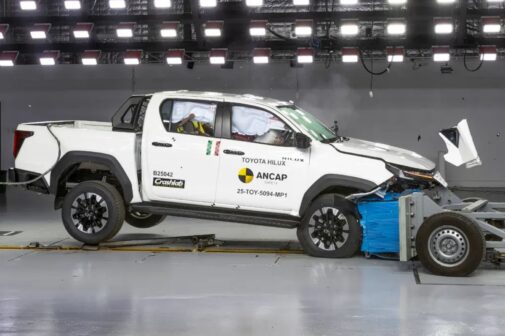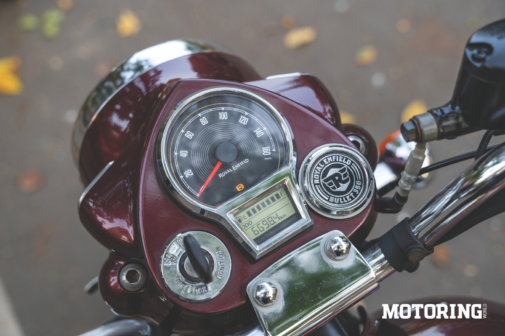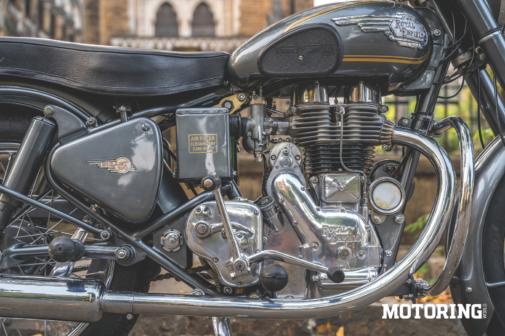If two-wheeled nostalgia were poured out of a bottle, it’d take the form of a Bullet. It does seem like 350cc worth of long-stroke combustion-chamber volume beats the most like a human heart. And perhaps forms a bit of our general DNA, too, actually; given the Bullet name’s 92-year existence, 69 of which it has spent in India, it’s very likely that most of our population is simply genetically predisposed to falling for its loping charm. I myself am an example of said deep-rooted and persistent condition; two old cast-iron Bullets stand in my garage, one passed down from my father and the other from my father-in-law. Talk about being double tapped.
However, glancing at an indicated 100 kph in third gear on the new (ish) J-Series Bullet 350 on a dim early November morning down Mumbai roads, I couldn’t help but think, ‘My old Bullets would’ve sent their pushrods through their tanks by now.’ I was on the way to meet a 1957 G2 Bullet owned by our friend, Shivdutt Halady, one of the many (wait for it) Royal Enfields in his expansive garage. Why, though? Well, because I’ve been dying to write this story since the new Bullet came out last year — and what better occasion than our first For Old Times’ Sake issue? Also, I stubbornly waited for the Bullet despite the Classic being with us for three years now. Same bike, really, but different vibes (heh), you see.
The first thought that came to mind as I rolled up to the G2 was, ‘How does that thing look newer than what I’m riding?’ Honestly, though, the ease with which I got off the bike I was riding — side stand down, ignition off, walk away — returned vividly a few moments later when I tried to enact the opposite sequence on the old bike. Halady’s encouraging words were helpful: ‘It’s an Amal carburettor, it’s a bit finicky.’ ‘The aluminium centre stand is prone to breaking. Which is why I have spare ones.’ ‘It wasn’t starting this morning, but then it decided to.’ And to think the new Bullet wouldn’t have looked out of place next to the old one in a 1950s London showroom. Well, except for more than a few quizzical looks at the brakes, tyres, indicators and the little digital screen in the meter. I can’t even imagine what would’ve happened if they opened up the bike, though.
The old Bullet felt familiar enough, really; I’ve been riding one since I was 13 years old, after all. But the unfamiliar bits almost reduced me to a newbie. I remembered what Halady had said a short while ago: ‘There was a time when you could buy two new Bullets on the same day, and they’d both run differently.’ The same goes for familiarity with old Bullets, too. Just because you ride one doesn’t mean that another one will respond the same way. Character and all that, you see. And it’s quite something, too, to have a new experience with an old motorcycle that I thought I was used to. Old Bullets are like physical ciphers, each one unlocked by a key unique to its rider.
I did get the hang of it soon enough, though, and felt that the G2 seemed a bit more ‘lopey’ than usual. ‘It’s because of the magdyno, all the linkages make a bit more noise and also make the bike feel different,’ Halady explained later. As expected, the brakes seemed powered more by futile desperation than any physical mechanism. But the rest of the bike felt one-piece tight, as every proper motorcycle, new or old, should. That’s something I felt on the new Bullet as well (of course), when I rode it from Goa to Mumbai earlier this year. Although, I have to say that it could do with more power and less weight. I mean, we’re now closer to the 2050s than the 1950s, right? How about a Bullet 500, RE?
And yet, the new Bullet (yes, yes, the Classic as well) remains an impressive motorcycle in its own understated way. RE has gotten so many things right with it, picking out faults almost seems unnecessary. It feels rock solid, almost like you could ride through walls on it. It’s smooth without being boring, and its modern workings bring forth the best things about a Bullet — a torquey ride and that enduring sound. However, it’s not perfect, as many occasions of trying to extract maximum velocity down a twisty road have proven; the Bullet does tend to make all kinds of shapes if treated like a track bike. Has that ever stopped me, though? Nope — I just ride it like it wants to be ridden. And that’s always been the way with old Bullets as well.
The old Bullet’s Albion gearbox on the right side is probably enough to short circuit the brain of a newer rider. That’s provided they avoid getting an upper cut delivered to their chin by their own knee courtesy of the kick starter (true story I witnessed, by the way). The dreaded ‘back kick’ is always a realistic possibility if you decide to start an old Bullet; getting used to it is usually a mix of your leg following through with full commitment and making your peace with whatever outcome follows. No doubt, most people will look at the new Bullet’s kick-less engine with more than a bit of gratitude. Even if some testosterone-charged parts of the country claim that, ‘If it doesn’t have a kick, it’s not a Bullet.’ Can’t say much to or about people who like kicking things all the time.
Anyway, the Bullet has always been about feel, not efficiency and speed, hand-painted pinstripes and all. It is an occasion of a motorcycle, and even redlining the new one through its gears as frequently as I do feels like I’m doing something meaningful and not just getting somewhere for the sake of it. That old casquette is the shape of my childhood memories, that longstroke character is the rhythm of my thought. And it’s amazing that the new Bullet comes damn near close to the old one in terms of feel (except for the feeling of impending doom). Despite having no pushrods and contact-breaker points to help it along, either… come to think of it, that’s probably for the best.
Also, what’s nostalgia without a proper misty-eyed origin story? Nothing, and that’s why I had to pose the question to Halady: ‘Why this fondness for, or rather, obsession with Bullets?’ He replied, ‘Well, there was a priest in my school who had a Bullet. I used to see him, always cleaning his bike, and I thought that was a nice motorcycle. But then I got into two-strokes, and went the Yamaha RX and RD way. Many years later, in 2005, I had the chance to buy this very G2, my first Bullet. I still have my two-strokes, but these old Bullets are something special.’ Nostalgia extends well into the future, too. I already have a plan to get a Bullet when it turns 100 years old. I mean after the one that I will restore this year and the other one that I will buy next year.
The Bullet was India’s original aspirational motorcycle, the first adventure bike, the everything awesome on two wheels — period. Every old Bullet is the best motorcycle ever, provided its rider loves it as one. It is the last remnant of a colonial hangover that’s become a national one. And, in a case of historical repetition, the Japanese have been trying to kill it (and the Europeans and Indians have joined in), as they did the original British motorcycling industry, but it’s been a resounding failure. I’m willing to bet my two Bullets that it won’t ever happen. The Bullet’s depth of spirit cannot be outdone, it simply can’t. It’s a motorcycle that’s also a story, the story of the people who ride it. Good luck to everyone trying to outdo that.
If the cast-iron Bullet were a hill, I’d happily die on it. That motorcycle is a stand, one taken as pleasantly as it is firmly. It’s a machine that evokes only two reactions — either people want nothing to do with it or they can’t get enough of it, but there is no middle path with it. Whenever I ride an old Bullet, I unfailingly remember and miss all the old Bullets I’ve ever ridden, if not all at once. Then again, the new Bullet is a motorcycle I’d happily live on, too; I just hope that no one notices when I buy the new chrome Classic and slam the Bullet logo on its tool boxes before I even swing a leg over it. And no, I didn’t forget about the number of RE 350s Halady owns — he has ten of them.

























